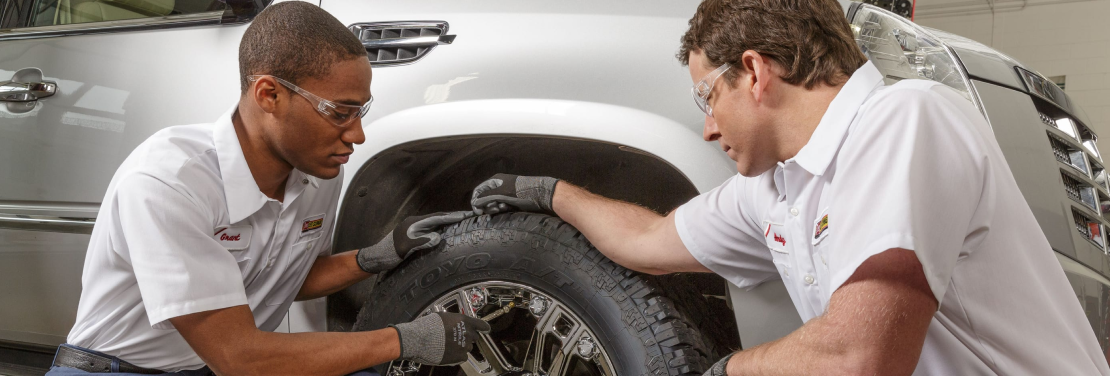Morris Tire and Alignment: Your Trusted Source for Reliable Service
Morris Tire and Alignment: Your Trusted Source for Reliable Service
Blog Article
Tire Solution: Understanding Tire Stress Surveillance Systems
Comprehending Tire Stress Surveillance Systems (TPMS) is a crucial aspect of preserving ideal lorry performance and security on the roadway. With developments in vehicle modern technology, TPMS has actually come to be a typical feature in modern-day vehicles, providing real-time details on tire stress levels.

Value of TPMS
The significance of Tire Pressure Tracking Solutions (TPMS) hinges on their ability to enhance lorry safety and security and efficiency with real-time surveillance of tire stress levels. Preserving the appropriate tire stress is essential for guaranteeing optimum handling, braking, and overall safety of a vehicle. TPMS offers chauffeurs with immediate comments on any type of overinflated or underinflated tires, enabling for prompt changes to be made.
Elements of TPMS
Comprising different important elements, a Tire Pressure Surveillance System (TPMS) works as a sophisticated safety and security attribute in modern automobiles. The primary components of a TPMS include sensors, a control component, and a caution sign. Sensors are generally situated in the tire valve stem or connected to the wheel assembly, where they determine tire pressure and send information to the control module. If it finds dramatically low stress in any of the tires, the control module procedures this details and sets off a caution. The warning indication, frequently a symbol on the dashboard, signals the chauffeur to examine the damaged tire or tires. Some progressed TPMS designs additionally show the actual tire pressure readings for each and every tire, supplying chauffeurs with real-time information to make certain optimal tire performance and safety and security. By keeping track of tire pressure continuously, TPMS assists avoid crashes, minimizes tire wear, and enhances gas effectiveness, making it an essential part for vehicle security and efficiency.
Sorts Of TPMS

On the various other hand, indirect TPMS counts on the automobile's wheel speed sensors to keep an eye on tire pressure. This system spots underinflation by comparing the rotational speeds of the wheels. Indirect TPMS is less expensive than straight TPMS, as it makes use of existing sensors within the lorry.
While straight TPMS supplies extra exact readings, indirect TPMS is simpler in style and generally calls for much less maintenance. Both systems have their constraints and benefits, and the selection in between them often depends upon variables such as price, automobile make, and personal choice. Comprehending the distinctions in between these 2 types of TPMS can help automobile owners make educated decisions relating to tire maintenance and safety.
TPMS Upkeep Tips
Effective upkeep of TPMS is necessary for guaranteeing ideal performance and safety and security of your vehicle. On a regular basis examining the TPMS sensing units for any type of damage or deterioration is critical. Make certain that the sensors are clean and complimentary from debris that can hinder their functioning. In addition, it is a good idea to inspect the sensor batteries periodically and replace them as needed to ensure precise readings. Conduct routine look at the tire stress levels and contrast them with the TPMS readings to guarantee they correspond. Rectify the system complying with the maker's guidelines if there are any inconsistencies. During tire turning or replacement, make sure that the TPMS parts additional info are taken care of very carefully to stop any type of possible damage. official source Last but not least, if the TPMS alerting light brightens on the control panel, address the problem promptly by inspecting the tire stress and the general system for any faults. By sticking to these maintenance tips, you can extend the life expectancy of your TPMS and enhance the safety and security of your driving experience.
Benefits of Proper Tire Stress
Preserving proper tire pressure, as stressed in TPMS Upkeep Tips, is important for reaping the countless advantages connected with optimum tire stress levels. One of the key benefits of maintaining the correct tire stress is improved fuel performance. When tires are effectively pumped up, there is much less moving resistance, resulting in better fuel economic climate. Furthermore, correct tire stress ensures also tire wear, extending the lifespan of the tires and promoting more secure driving conditions. With the ideal tire stress, automobiles likewise have much better handling and grip, specifically in damaging weather. This can boost overall driving performance and safety for the driver and guests. Preserving optimum tire pressure can add to a smoother and extra comfy experience by minimizing resonances and noise triggered by underinflated tires. To conclude, the advantages of appropriate tire stress surpass simply tire long life; they incorporate improved fuel effectiveness, boosted safety, much better lorry efficiency, and general driving comfort.
Final Thought
Finally, understanding tire pressure monitoring systems (TPMS) is critical for maintaining optimum tire pressure and ensuring lorry safety. By identifying the importance of TPMS, being familiar with its elements, understanding the different kinds offered, adhering to correct upkeep suggestions, and realizing the advantages of maintaining correct tire pressure, motorists can enhance their driving experience and lengthen the life-span of their tires. Appropriate tire stress is vital to secure and reliable automobile operation.

Report this page